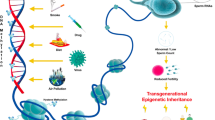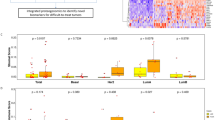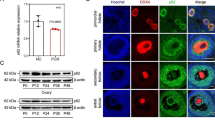Abstract
Purpose
Human follicular fluid constitutes the microenvironment of follicles and includes various biological active proteins that can affect follicle growth and oocyte fertilization. Conducting proteomic evaluations of human follicular fluid may be helpful for identifying potential biomarkers possibly possessing a predictive value for oocyte quality and the success of in vitro fertilization.
Method
We performed proteomic profiling of human follicular fluids containing oocytes that were fertilized and resulted in pregnancy and follicular fluids containing oocytes that were not fertilized in the same patients undergoing intracytoplasmic sperm injection using the LTQ Orbitrap coupled with liquid chromatography-tandem mass spectrometry (LC/MS/MS) analyses.
Results
We identified a total of 503 proteins in human follicular fluids containing fertilized and non-fertilized oocytes obtained from 12 patients. We also found that 53 proteins exhibited significantly different spectral counts between the two groups, including heparan sulfate proteoglycan perlecan, which showed significant upregulation in the follicular fluids containing fertilized oocytes in comparison with that observed in the follicular fluids containing non-fertilized oocytes.
Conclusion
Our results suggest a possibility that proteins identified by LC/MS/MS in follicular fluid might not only be involved in folliculogenesis, but also function as biomarkers possessing predictive potential for oocyte maturation and the success of IVF when their expression levels are significantly different between fertilized and non-fertilized oocytes, although no distinctive biomarkers were identified in the current study.


Similar content being viewed by others
References
Angelucci S, Ciavardelli D, Di Giuseppe F, Eleuterio E, Sulpizio M, Tiboni GM, et al. Proteome analysis of human follicular fluid. Biochim Biophys Acta. 2006;1764(11):1775–85. doi:10.1016/j.bbapap.2006.09.001.
Angervo M, Koistinen R, Seppala M. Epidermal growth factor stimulates production of insulin-like growth factor-binding protein-1 in human granulosa-luteal cells. J Endocrinol. 1992;134(1):127–31.
Atiomo W, Khalid S, Parameshweran S, Houda M, Layfield R. Proteomic biomarkers for the diagnosis and risk stratification of polycystic ovary syndrome: a systematic review. BJOG. 2009;116(2):137–43. doi:10.1111/j.1471-0528.2008.02041.x.
Boxmeer JC, Macklon NS, Lindemans J, Beckers NG, Eijkemans MJ, Laven JS, et al. IVF outcomes are associated with biomarkers of the homocysteine pathway in monofollicular fluid. Hum Reprod. 2009;24(5):1059–66. doi:10.1093/humrep/dep009.
Buhimschi IA, Zambrano E, Pettker CM, Bahtiyar MO, Paidas M, Rosenberg VA, et al. Using proteomic analysis of the human amniotic fluid to identify histologic chorioamnionitis. Obstet Gynecol. 2008;111(2 Pt 1):403–12. doi:10.1097/AOG.0b013e31816102aa.
Chegini N, Williams RS. Immunocytochemical localization of transforming growth factors (TGFs) TGF-alpha and TGF-beta in human ovarian tissues. J Clin Endocrinol Metab. 1992;74(5):973–80.
Cho CK, Smith CR, Diamandis EP. Amniotic fluid proteome analysis from Down syndrome pregnancies for biomarker discovery. J Proteome Res. 2010;9(7):3574–82. doi:10.1021/pr100088k.
de Agostini A. An unexpected role for anticoagulant heparan sulfate proteoglycans in reproduction. Swiss Med Wkly. 2006;136(37–38):583–90.
Dieplinger H, Ankerst DP, Burges A, Lenhard M, Lingenhel A, Fineder L, et al. Afamin and apolipoprotein A-IV: novel protein markers for ovarian cancer. Cancer Epidemiol Biomarkers Prev. 2009;18(4):1127–33. doi:10.1158/1055-9965.EPI-08-0653.
Dulay AT, Buhimschi CS, Zhao G, Oliver EA, Mbele A, Jing S, et al. Soluble TLR2 is present in human amniotic fluid and modulates the intraamniotic inflammatory response to infection. J Immunol. 2009;182(11):7244–53. doi:10.4049/jimmunol.0803517.
Estes SJ, Ye B, Qiu W, Cramer D, Hornstein MD, Missmer SA. A proteomic analysis of IVF follicular fluid in women <or=32 years old. Fertil Steril. 2009;92(5):1569–78. doi:10.1016/j.fertnstert.2008.08.120.
Farach-Carson MC, Carson DD. Perlecan—a multifunctional extracellular proteoglycan scaffold. Glycobiology. 2007;17(9):897–905. doi:10.1093/glycob/cwm043.
Gardner DK, Lane M, Stevens J, Schlenker T, Schoolcraft WB. Blastocyst score affects implantation and pregnancy outcome: towards a single blastocyst transfer. Fertil Steril. 2000;73(6):1155–8.
Gebhardt KM, Feil DK, Dunning KR, Lane M, Russell DL. Human cumulus cell gene expression as a biomarker of pregnancy outcome after single embryo transfer. Fertil Steril. 2011;96(1):47–52 e42. doi:10.1016/j.fertnstert.2011.04.033.
Hamel M, Dufort I, Robert C, Leveille MC, Leader A, Sirard MA. Identification of follicular marker genes as pregnancy predictors for human IVF: new evidence for the involvement of luteinization process. Mol Hum Reprod. 2010;16(8):548–56. doi:10.1093/molehr/gaq051.
Hanrieder J, Nyakas A, Naessen T, Bergquist J. Proteomic analysis of human follicular fluid using an alternative bottom-up approach. J Proteome Res. 2008;7(1):443–9. doi:10.1021/pr070277z.
Hillier SG. Current concepts of the roles of follicle stimulating hormone and luteinizing hormone in folliculogenesis. Hum Reprod. 1994;9(2):188–91.
Jarkovska K, Martinkova J, Liskova L, Halada P, Moos J, Rezabek K, et al. Proteome mining of human follicular fluid reveals a crucial role of complement cascade and key biological pathways in women undergoing in vitro fertilization. J Proteome Res. 2010;9(3):1289–301. doi:10.1021/pr900802u.
Jiao X, Billings PC, O’Connell MP, Kaplan FS, Shore EM, Glaser DL. Heparan sulfate proteoglycans (HSPGs) modulate BMP2 osteogenic bioactivity in C2C12 cells. J Biol Chem. 2007;282(2):1080–6. doi:10.1074/jbc.M513414200.
Krizan J, Cuchalova L, Sima P, Kralickova M, Madar J, Vetvicka V. Altered distribution of NK and NKT cells in follicular fluid is associated with IVF outcome. J Reprod Immunol. 2009;82(1):84–8. doi:10.1016/j.jri.2009.05.005.
Lee HC, Lee SW, Lee KW, Cha KY, Kim KH, Lee S. Identification of new proteins in follicular fluid from mature human follicles by direct sample rehydration method of two-dimensional polyacrylamide gel electrophoresis. J Korean Med Sci. 2005;20(3):456–60.
Lu M, Whelan SA, He J, Saxton RE, Faull KF, Whitelegge JP, et al. Hydrophobic proteome analysis of triple negative and hormone-receptor-positive-Her2-negative breast cancer by mass spectrometer. Clin Proteomics. 2010;6(3):93–103. doi:10.1007/s12014-010-9052-1.
Preissner KT, Seiffert D. Role of vitronectin and its receptors in haemostasis and vascular remodeling. Thromb Res. 1998;89(1):1–21.
Spitzer D, Murach KF, Lottspeich F, Staudach A, Illmensee K. Different protein patterns derived from follicular fluid of mature and immature human follicles. Hum Reprod. 1996;11(4):798–807.
Takikawa S, Iwase A, Goto M, Harata T, Umezu T, Nakahara T, et al. Assessment of the predictive value of follicular fluid insulin, leptin and adiponectin in assisted reproductive cycles. Gynecol Endocrinol. 2010;26(7):494–9. doi:10.3109/09513591003632050.
Twigt J, Steegers-Theunissen RP, Bezstarosti K, Demmers JA. Proteomic analysis of the microenvironment of developing oocytes. Proteomics. 2012;12(9):1463–71. doi:10.1002/pmic.201100240.
Veeck LL. An atlas of human gametes and conceptuses. An illustrated reference for assisted reproductive technology. New York: Parthenon Publishing; 1999.
Watson LN, Mottershead DG, Dunning KR, Robker RL, Gilchrist RB, Russell DL. Heparan sulfate proteoglycans regulate responses to oocyte paracrine signals in ovarian follicle morphogenesis. Endocrinology. 2012;153(9):4544–55. doi:10.1210/en.2012-1181.
Acknowledgement
This study was supported by Yamaguchi Endocrine Research Foundation.
Conflict of interest
The authors declare that they have no conflict of interest.
Author information
Authors and Affiliations
Corresponding author
Additional information
Capsule
A proteomic analysis using LC/MS/MS revealed significant differences in the amounts of several proteins, including heparan sulfate proteoglycan perlecan, in follicular fluid containing fertilized oocytes and that containing non-fertilized oocytes in the same patient.
Electronic supplementary material
Below is the link to the electronic supplementary material.
Supplemental Table 1
(DOC 417 kb)
Rights and permissions
About this article
Cite this article
Bayasula, Iwase, A., Kobayashi, H. et al. A proteomic analysis of human follicular fluid: comparison between fertilized oocytes and non-fertilized oocytes in the same patient. J Assist Reprod Genet 30, 1231–1238 (2013). https://doi.org/10.1007/s10815-013-0004-3
Received:
Accepted:
Published:
Issue Date:
DOI: https://doi.org/10.1007/s10815-013-0004-3




